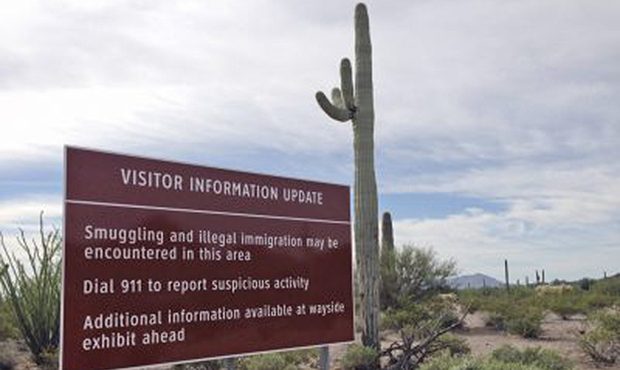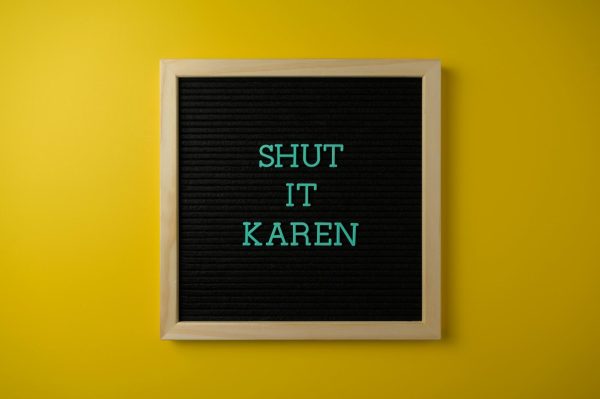Blasting of Native American sites for US border wall raises concerns
A local Native American site in Arizona is being blown up for the construction of President Trump’s border wall. The site is called Monument Hill and it is located at Organ Pipe Cactus National Monument on the U.S.- Mexico border.
“This hill, from the information we’ve been able to gather, was used by Hia-Ced O’odham for religious ceremonies,” Peter Steere, the tribe’s historic preservation officer said. “This is also a place, when the Apache were raiding out here, if the Apache warrior was killed, his body was placed on this hill.”
Some of the burial sites among the sacred land even contained fragments of bone from thousands of years ago. One burial site in particular, Las Playas, contained artifacts from 10 thousand years ago.
“They’re our ancestors,” Ned Norris Jr. said. “They’re our remnants of who we are as a people throughout this whole area. It’s our obligation, our duty, to do what is necessary to protect that.”
Not only that, but clearing the way for Trump’s wall also includes removing ancient saguaro cacti.
“It is the embodiment of our ancestors,” Congressman Raúl Grijalva of Arizona said. “So, to see them turned into mulch is deeply upsetting.”
But there is still more to come for the future.
The border wall Mr. Trump promised during his 2015 campaign would destroy up to 22 archeological sites within Organ Pipe. Monument Hill is also a part of The Organ Pipe Cactus Biosphere Reserve.
The Organ Pipe Cactus Biosphere Reserve is a first-generation biosphere reserve created in 1976 for the conservation of the unique resources representing a pristine example of an intact Sonoran Desert ecosystem. The biosphere designation has helped to attract scientists from around the world to Organ Pipe Cactus to conduct a variety of important studies to help people better understand the Sonoran Desert and the impact of humans on the landscape. This is also known as the Roosevelt Reservation.
“The easement was established in 1907 by President Theodore Roosevelt to keep the border ‘free from obstruction as a protection against the smuggling of goods’ between the United States and Mexico,” Erin Stone said.
However, in 2005, Congress passed the REAL ID Act, which allows the government to relinquish laws that disagree with the U.S. national security policy.
“The border wall cannot be constructed on the Native American reservation because it is private land,” Audrey Mcnamara said. “The nation’s burial sites, which Grijalva said are “immediately adjacent” to the reservation, are on public land, making them fair game for the Department of Homeland Security, which oversees the Customs and Border Protection.”
With this act, the Trump administration has relinquished dozens of laws including the Environmental Protection Act, Repatriation Act, the Endangered Species Act, and the Native American Graves Protection.
“There has been no consultation with the nation,” Grijalva said. “This administration is basically trampling on the tribe’s history. And to put it poignantly, it’s ancestry.”
In addition to blasting the the sacred sites, the construction of Trump’s wall will also affect two of the most rare and biodiverse desert water systems in the Southwest: the San Pedro Riparian National Conservation Area and the San Bernardino National Wildlife Refuge.
“‘Bollard-style’ fencing consists of steel posts spaced several inches apart, close enough together that the narrow openings could become clogged with debris from flowing water, effectively damming a river or wash,” Stone said.
Trump’s border wall currently extends 40 miles out from both sides of the San Pedro River.
“Customs and Border Protection wrote that the agency will conduct hydraulic and hydrological analyses ‘to ensure the new barrier does not deflect water or obstruct flow’ at San Pedro,” Stone said. “The statement described possible barrier designs such as ‘gates or grates to allow for the passage of flood waters and debris.’”
However, conservation groups, agencies, and locals still worry that even with the floodgates, the river will end up being dammed.
“These floods are critical to the health of the river,” Laiken Jordahl, borderlands campaigner said. “If you put in structures that essentially dam it, you’re really altering the ecosystem that we see here. This is already an extremely strained resource, and to wall it off and essentially dam it is just an insult to injury.”
With the possibility of San Pedro being dammed, this migratory pathway could affect wild animals like jaguars and mountain lions.
“With climate change increasing the severity of droughts and transforming habitats in the Southwest, migration pathways are even more essential for wildlife survival,” Stone said. “The jaguar will likely go extinct in the U.S. if 30-foot bollard-style fencing seals the border in this region.”
Not only will this affect animals higher up in the food chain, but this will also affect animals lower in the food chain, causing an even greater impact in the ecosystem.
“The Trump administration has turned our safe and beautiful borderlands and border communities into a place where our nation’s most important laws — the laws that protect the environment and ensure the health, safety and well-being of communities everywhere else in America — literally do not apply,” said Kevin Bixby, executive director of the Southwest Environmental Center.
Your donation will support the student journalists of Gibson Southern High School. Your contribution will allow us to purchase equipment and cover our annual website hosting costs.

Kalina Dickinson is a sophomore and a first time reporter and photographer for "The Southerner." She enjoys reading, writing novels, photography and listening...






